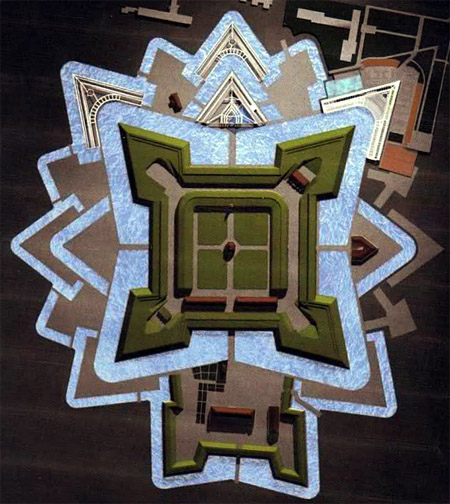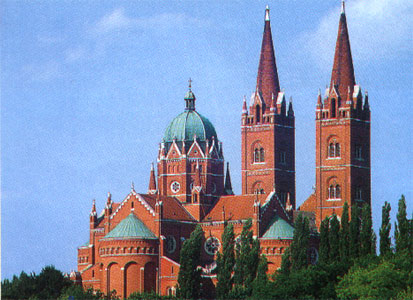Croatia – Slavonia and Baranja (Osijek, Sisak, Bjelovar) May 19-20 2019
JASENOVAC
Jasenovac concentration camp was an extermination camp established in Slavonia by the authorities of the Independent State of Croatia(NDH) during World War II. The camp was established and operated solely by the governing Ustaše regime rather than by Nazi Germany as in the rest of occupied Europe. It was one of the largest concentration camps in Europe and it has been referred to as “the Auschwitz of the Balkans” and “the Yugoslav Auschwitz”.
It was established in August 1941 in marshland at the confluence of the Sava and Una rivers near the village of Jasenovac, and was dismantled in April 1945. It was “notorious for its barbaric practices and the large number of victims”. It was founded and led by Ante Pavelic (1889-1959) who escaped to Italy, then Argentina and died in Madrid.
In Jasenovac the majority of victims were ethnic Serbs; others were Jews, Roma, and some political dissidents. Jasenovac was a complex of five sub camps spread over 210 km2 (81 sq mi) on both banks of the Sava and Una rivers. The largest camp was the “Brickworks” camp at Jasenovac, about 100 km (62 mi) southeast of Zagreb. The overall complex included the Stara Gradiška sub-camp, the killing grounds across the Sava river at Donja Gradina, five work farms, and the Uštica Roma camp.
During and since World War II, there has been much debate and controversy regarding the number of victims killed at the Jasenovac concentration camp complex during its more than three-and-a-half years of operation. After the war, a figure of 700,000 reflected the “conventional wisdom”, although estimates have gone as high as 1.4 million. The authorities of the Socialist Federal Republic of Yugoslavia conducted a population survey in 1964 that resulted in a list of 59,188 victims of Jasenovac and Stara Gradiška, the findings were not published until 1989. Croatian academic Vladimir Žerjavić published books in 1989 and 1992 in which he “meticulously analysed the available data” and concluded that some 83,000 people had been killed at Jasenovac. His findings were criticized by the director of the Museum of Victims of Genocide in Belgrade, Milan Bulajić, who defended his figure of 1.1 million, although his rebuttal was later dismissed as having “no scholarly value”. Since Bulajić’s retirement from his post in 2002, the Museum has no longer defended the figure of 700,000 to 1 million victims of the camp. In 2005, Dragan Cvetković, a researcher from the Museum, and a Croatian co-author published a book on wartime losses in the NDH which gave a figure of approximately 100,000 victims of Jasenovac.
The United States Holocaust Memorial Museum (USHMM) in Washington, D.C. presently estimates that the Ustaša regime murdered between 77,000 and 99,000 people in Jasenovac between 1941 and 1945, comprising; “between 45,000 and 52,000 Serbs; between 12,000 and 20,000 Jews; between 15,000 and 20,000 Roma (Gypsies); and between 5,000 and 12,000 ethnic Croats and Muslims, political and religious opponents of the regime.” The Jasenovac Memorial Site quotes a similar figure of between 80,000 and 100,000 victims.
For a complete description of Jacenovic.
Stone Flower Monument. Created by Bogdan Bogdanovic (1922-2020), an architect and one time mayor of Belgrade, it is on a large meadow at the sight of the Camp III brickworks, the biggest camp in the Jasenovac Concentration Camp. It operated from November 1941-April 22 1945 as a work/death camp. The majority were either hanged or killed with cold weapons or died from starvation and exhaustion. The victims were either killed as ethnic genocide – 47,141 Serbs (the main reason for the camp was to eliminate Serbs), 11,148 Roma, 13,041 Jews – or people who opposed the Ustasha government – 4,235 Croats and 1,129 Muslims from Bosnia and Herzegovina. 20,000 of the total 82,570 were children. Most of the women and children were housed in Stara Gradisha Concentration Camp 30kms form Camp III that operated from February 1942 to the end of 1944.
When the Ustasha retreated, they burned and ruined the buildings so none are preserved nor is anything that existed when the Yugoslav Army arrived. The townspeople of Jasenovac took the bricks to rebuild their damaged homes. By 1947, the area had returned to an overgrown meadow. It took 20 years before the survivors even marked the area with boards indicating the location of important buildings and their families started planning a monument.
Built in 1964-66, the Stone Flower Monument is a large cast concrete flower with four large petals coming from a central column and supported by two large concrete “wings”. It ended up having acoustic properties as the petals amplify sound. A museum was also created. In 1991-94, all the documents were removed to Banya Luca but only 70% were returned. The area needed to be demined and restoration was completed in 2006. A metal disc shows the location of various buildings also marked by mounds and wound depressions on the edge of two small connected lakes. Walk out on the long boardwalk made of railway ties to the monument. Free
SLAVONSKI BROD
Brod Fortress. Built between 1715-1780 by the Austrians on the Sava River at Slavonski Brod, it formed the line of defense (along with Osijek and Stara Gradiska) against the Ottoman Empire. Designed by the Prince Eugene of Savoy on Vauban-like principles, it had a large rectangular core and external ravelins or triangular buttresses made of rammed earth and brick, all surrounded by a moat. The ravelins give it a star-like appearance. It held 4000 soldiers and had 150 cannon in barracks built into the banks in arched entries surrounding the centre. In the south was the hornwerk (horn-like) structure to prevent crossing the Sava River.
Now the hornwerk is gone and the large centre is empty except for a small octagonal chapel. The Ruzic Gallery holds a permanent collection of modern art. Free


Đakovo Cathedral. This mammoth dark red brick church sits on the main square. It has two 84m steeples in front and a dome 59m high. Inside it is 74 X 40m. It is pretty with dark blue/yellow stars on the rib vaulted ceilings and floral decorations on the columns and side walls. Lunette paintings cover the upper side walls and cross nave. The windows are plain clear glass. When I entered, mass was being held with 15 in the congregation including one nun. Free

Prandau-Normann Castle, Valpovo. This is a palace or castle owned by the noble Prandau-Normann family from the baroque period.
Pejačević Castle, Našice. In the west part of Osijek, the centre and right side of this manor house is abandoned and empty. The left side is a medical imaging business. Free.
OSIJEK
Church of St Peter and St Paul. In the new part of the city, this huge dark red brick church was closed for cleaning but the lady let me have a quick look. There are murals on the ceiling and side walls depicting you know who.
Pedestrian Bridge. The large white cable suspension bridge crosses the wide river. The cables are supported by two high white towers on each end.

Historical-Town Planning Ensemble Tvrda (Fort) in Osijek. This tentative WHS: (01/02/2005) consists of the old town on the river well south of the main commercial district. All that remains of the fort (tvrda) is the east wall on the river with one large ravelin. The town is laid out on a grid system with two large squares, the east one was completely demolished and being renovated. The other square is lovely with a few sidewalk restaurants and the museum. The buildings are all Baroque. Free
Museum of Slavonia. This regional museum in the old magistrate’s building has archaeology, ethnology and a large exhibit on the fort, part of the Austrian defense system to defend the empire from the Turks. 20 HK
VUKOVAR
Vukovar Hospital Museum (Place of Rembrance – Vukovor Hospital). In the basement of the present active Vulkovar Hospital, it was all in Croat so I could only figure out a few details. Enter on the east side where there is a large banner like cross. The museum (completely under the large courtyard of the hospital) consists of several dummies wrapped in white plaster bandages in hospital beds. There are several babies and a lot of medical equipment like anaesthetic machines. One of the wards has 3-tiers of beds. Enter an odd room that is completely mirrored with a lit red plastic cube in the centre with candles burning on top . A continuous tape recording lists those killed. The corridor outside has white tiles with the names and year of birth of those that died here, including some black tiles of those whose bodies are still missing. Free
Vukovar Water Tower. Built in 1963-8, this 50.3m high water tower is an iconic symbol of Vukovar. It is the most famous symbol of suffering in the city during the Croatian Homeland War of 1991. It was the most frequent target of the Yugoslav onslaught (because of its symbolic significance and that it flew a large Croatian flag on top) and was hit with over 600 shells during the 3-month long battle. It suffered significant damage but was not destroyed.

It was completely covered in scaffolding. The outside signs of the battle will not be repaired but the interior is being completely renovated. It consists of a large concrete pillar with 8 reinforcing wings. It gradually enlarges to the top with 5 stories of brick and a restaurant lookout. A park and museum are also under construction.
It is in the NM “the dark side” series along with the hospital “Place of Remembrance”. Vulcovar Island. Although it is Croatian, it can only be accessed from the Serbian side where a small river forms the east border and the wide river on the Croatian side.
Vucedol Culture Museum. Well east of the town is this modern red brick museum built into a hillside. It houses all the archaeology from 6000 BC to 1300 BC in several categories: geology, agriculture, hunting and fishing, crafts, settlements, house, clothing, metallurgy, graves and religion. 25 KN
Ilok Panhandle, In the NM “XL” series, this is the far east border with Serbia. It is lovely town built away from and high above the river.
Ilok Regional Museum. Housed in the Grad Ilok, this regional museum has the usual archaeology, the history of the fort that forms part of the structure of the manor house and ethnology. 20 HK
Ruined walls and a long continuous intact wall of the fort line the cliff top, running all the way down to the church.
I then crossed into Serbia shortly after Ilok. The Serbian side asked a lot of questions and was surprised that I had been traveling for so long.
